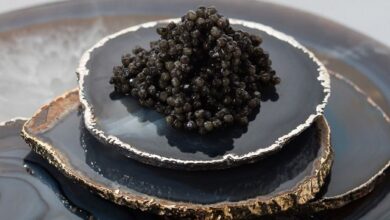Nicholas Morgan Talks Johnnie Walker
A Chat With The Author Of A Long Stride: The Story Of The World’s No. 1 Scotch Whisky
By Kurt Maitland
 KM: First off, tell our readers a bit about yourself
KM: First off, tell our readers a bit about yourself
NM: I’m a historian by training. I joined United Distillers in 1990 to help them set up an archive of material relating to their brand-owning companies. Somehow, I became a marketing director looking after the world’s largest portfolio of single malt whiskies, a job that I did for over ten years. For the last three, I’ve been researching and writing a book on the history of Johnnie Walker, which was published in October 2020 as part of the brand’s bicentenary celebrations.
KM: How did you go about researching such a rich topic?
NM: I was lucky to be able to consult the materials held in the Diageo archive, not just relating to John Walker & Sons, but also the Distillers Company, and W & A Gilbey, whose importance in the development of Scotch in the late nineteenth and early twentieth century isn’t really recognized. Of course, despite the size of the archive, it’s only a fragment of what would have been created by the business on a day-to-day basis, and the more you realize the richness of what you do have the more you realize the potential richness of what you don’t. So, one has to be quite creative in trying to find alternative sources of evidence to try and fill the gaps as best one can. That’s the hard slog of research that I love so much.
KM: What can you share about the origin of the Walker clan?
NM: It’s well known that John Walker was the son of a farmer who lived just outside of Kilmarnock, who was set up in a grocery business in the town in 1820 using part of his inheritance following his father’s early death. John ran a modest, but successful business until he died in 1857 (also at a relatively early age), and had developed a speciality in blending Scotch whisky, which accounted for about half the value of his business. Apart from that he’s almost a man of mystery, quite reticent, a trait which was shared by his children and grandchildren. They certainly weren’t self-promoting publicists like the Dewar’s or James Buchanan.
KM: Is there a Walker that stood out to you? Is there one you’d like to have met?
NM: I spent six months or more reading the surviving correspondence of Alexander Walker, John’s son, who ran the business from 1857 to 1889. We only have it for the last ten years of his life, but it tells a fascinating story. I also got to stay in an apartment in the house he built in Kilmarnock, just to help get inside his head. It takes remarkable people to create remarkable brands, and that’s what Alexander did. Needless to say, although I knew how the story was going to end, I was in tears when I read his final letter, written a few days before he died. Unlike Tommy Dewar and James Buchanan, who courted high-society and invested heavily in prize-winning racehorses, Alexander preferred his garden, his golf and his close friends. A few days before he died, he was out with his mates on the golf-course, playing a round for a wager of a sack of potatoes. That’s what he described with relish and humor in that last letter.

KM: Is there something you found during researching the book that surprised you?
NM: So much! I’m never one to call myself an expert, but even I was surprised by how much I didn’t know. I suppose one thing was the prevalence of toddy-drinking in the later nineteenth century and the gradual move by consumers to whisky and soda or mineral water. [I] hadn’t thought enough about how people drank whisky, and how that influenced the way that blends were made. Toddy whiskies were heavy and rich, blends for drinking with soda water lighter and fresher. So, there’s a distinct change in the style of blends in the 1890s and early 1900s, which means that blenders are looking for lighter styles of whiskies from the distilleries they use, which means that distillers have to rethink about the styles of whisky they are making, all of this at a time when there were also significant changes in maturation regimes due to the shortage of genuine sherry casks. Change, change, change!
KM: Talk to us about the impact of the JW blends when the brand started as well as their impact now?

(Credit: Diageo)
NM: In the early 1880s Walkers were exporting over 50,000 twelve bottle cases of their original Old Highland Whisky, principally to colonial markets such as Australia. Ten years later they claimed it was 100,000 cases. Walkers, and the other early big blenders like Greenlees Brothers and Ushers created the global market for Scotch, and they did that by giving consumers the promise of consistency: ‘guaranteed same quality all over the world’ as the early Walker advertising proudly claimed. Think about Johnnie Walker today, the world’s number one Scotch whisky, and you’ll soon get to that same promise of consistency, based now, as it was in the past, on having the largest and most diverse stocks of maturing malt and grain whiskies to call on. That’s why Johnnie Walker Black Label remains the benchmark of quality for deluxe whiskies the world over.
KM: What can you tell us about the new brand home of Johnnie Walker?
NM: It will be a multi-faceted immersive experience in the world of Johnnie Walker. Visitors will be able to learn about the history of the brand, explore the world of blending and enjoy a range of sensory experiences. There will be a performance space, a roof top bar with stunning views over Edinburgh and dining focusing on the best of Scottish produce. Of course, progress has been delayed by the pandemic but the hope is to open to visitors later this year.
KM: Do you have any future projects you would like to discuss?
NM: I’m currently working on a more general book about whisky, not just Scotch, but also whiskies from around the world. Its intended as an introduction for people who are curious to know more about the category, but will also contain some new material and opinions that will be of interest to the more expert.



